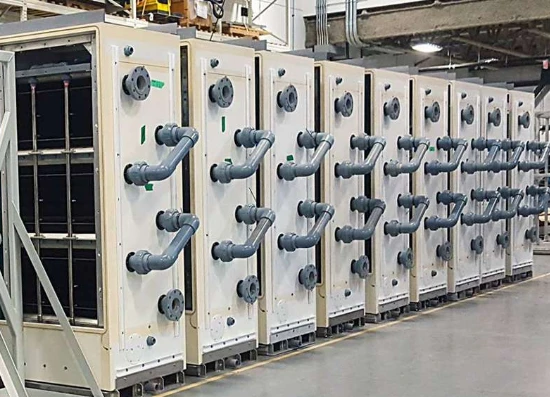
-
 Afrikaans
Afrikaans -
 Albanian
Albanian -
 Amharic
Amharic -
 Arabic
Arabic -
 Armenian
Armenian -
 Azerbaijani
Azerbaijani -
 Basque
Basque -
 Belarusian
Belarusian -
 Bengali
Bengali -
 Bosnian
Bosnian -
 Bulgarian
Bulgarian -
 Catalan
Catalan -
 Cebuano
Cebuano -
 China
China -
 China (Taiwan)
China (Taiwan) -
 Corsican
Corsican -
 Croatian
Croatian -
 Czech
Czech -
 Danish
Danish -
 Dutch
Dutch -
 English
English -
 Esperanto
Esperanto -
 Estonian
Estonian -
 Finnish
Finnish -
 French
French -
 Frisian
Frisian -
 Galician
Galician -
 Georgian
Georgian -
 German
German -
 Greek
Greek -
 Gujarati
Gujarati -
 Haitian Creole
Haitian Creole -
 hausa
hausa -
 hawaiian
hawaiian -
 Hebrew
Hebrew -
 Hindi
Hindi -
 Miao
Miao -
 Hungarian
Hungarian -
 Icelandic
Icelandic -
 igbo
igbo -
 Indonesian
Indonesian -
 irish
irish -
 Italian
Italian -
 Japanese
Japanese -
 Javanese
Javanese -
 Kannada
Kannada -
 kazakh
kazakh -
 Khmer
Khmer -
 Rwandese
Rwandese -
 Korean
Korean -
 Kurdish
Kurdish -
 Kyrgyz
Kyrgyz -
 Lao
Lao -
 Latin
Latin -
 Latvian
Latvian -
 Lithuanian
Lithuanian -
 Luxembourgish
Luxembourgish -
 Macedonian
Macedonian -
 Malgashi
Malgashi -
 Malay
Malay -
 Malayalam
Malayalam -
 Maltese
Maltese -
 Maori
Maori -
 Marathi
Marathi -
 Mongolian
Mongolian -
 Myanmar
Myanmar -
 Nepali
Nepali -
 Norwegian
Norwegian -
 Norwegian
Norwegian -
 Occitan
Occitan -
 Pashto
Pashto -
 Persian
Persian -
 Polish
Polish -
 Portuguese
Portuguese -
 Punjabi
Punjabi -
 Romanian
Romanian -
 Russian
Russian -
 Samoan
Samoan -
 Scottish Gaelic
Scottish Gaelic -
 Serbian
Serbian -
 Sesotho
Sesotho -
 Shona
Shona -
 Sindhi
Sindhi -
 Sinhala
Sinhala -
 Slovak
Slovak -
 Slovenian
Slovenian -
 Somali
Somali -
 Spanish
Spanish -
 Sundanese
Sundanese -
 Swahili
Swahili -
 Swedish
Swedish -
 Tagalog
Tagalog -
 Tajik
Tajik -
 Tamil
Tamil -
 Tatar
Tatar -
 Telugu
Telugu -
 Thai
Thai -
 Turkish
Turkish -
 Turkmen
Turkmen -
 Ukrainian
Ukrainian -
 Urdu
Urdu -
 Uighur
Uighur -
 Uzbek
Uzbek -
 Vietnamese
Vietnamese -
 Welsh
Welsh -
 Bantu
Bantu -
 Yiddish
Yiddish -
 Yoruba
Yoruba -
 Zulu
Zulu
fiberglass reinforced plastic tank
Understanding Fiberglass Reinforced Plastic Tanks Benefits and Applications
Fiberglass reinforced plastic (FRP) tanks have gained widespread popularity in various industries due to their unique properties and advantages over traditional materials. They are primarily constructed from fiberglass, a composite material that offers significant strength and durability while remaining lightweight. This combination makes FRP tanks an ideal choice for a variety of applications, from industrial storage to water treatment systems.
One of the primary benefits of FRP tanks is their exceptional resistance to corrosion. Unlike metal tanks that can rust or corrode when exposed to harsh chemicals or moisture, fiberglass tanks can withstand a wide range of substances, including acids, alkalis, and salts. This durability ensures a longer lifespan, reducing maintenance costs and the need for replacements. It is particularly beneficial for industries such as chemical processing, where the storage of corrosive materials is a daily requirement.
In addition to corrosion resistance, FRP tanks are also highly resistant to UV radiation. This characteristic is crucial for outdoor installations where tanks are exposed to sunlight for extended periods. UV resistance helps prevent the breakdown of the material, ensuring that the tank maintains its integrity and performance over time.
Weight is another significant advantage of fiberglass reinforced plastic tanks. Compared to traditional materials like steel or concrete, FRP tanks are considerably lighter. This lightweight nature not only simplifies handling and installation but also decreases the structural requirements of foundations. As a result, companies can save money on installation costs and equipment necessary for transport and placement.
fiberglass reinforced plastic tank

Furthermore, FRP tanks can be molded into various shapes and sizes, allowing for customization to meet specific needs. Whether it’s for small-scale projects or large industrial applications, manufacturers can produce tanks tailored to the precise specifications required. This flexibility is a significant advantage for businesses looking to maximize efficiency and optimize storage solutions.
Another essential aspect of FRP tanks is their excellent thermal insulation properties. The material helps maintain the temperature of the contents stored, which is particularly important in applications where temperature control is critical, such as in the agricultural and food processing sectors. By minimizing thermal exchange, FRP tanks can help preserve the quality and safety of stored materials.
The environmental impact of fiberglass reinforced plastic tanks is also noteworthy. Many manufacturers are now producing eco-friendly FRP options created from recycled materials, contributing to sustainability efforts. Moreover, the longevity and reduced maintenance requirements of these tanks mean they produce less waste over time compared to traditional options.
Applications of FRP tanks extend across various sectors, including water and wastewater treatment, chemical storage, oil and gas, and agriculture. In water treatment facilities, FRP tanks are often utilized for chemical dosing, filtration, and storage of potable water. In the agricultural field, they serve as storage solutions for fertilizers and other essential liquids, where chemical resistance is vital.
In conclusion, fiberglass reinforced plastic tanks offer a multitude of advantages, including corrosion resistance, lightweight design, UV stability, thermal insulation, and environmental benefits. Their versatility across industries makes them a popular choice for many applications. As businesses continue to seek effective, durable, and customizable storage solutions, the demand for FRP tanks is likely to grow, ensuring their place as a key component in industrial and commercial operations around the world.









